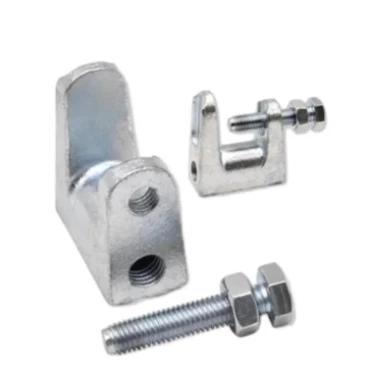Nov . 28, 2024 06:55 Back to list
Guide to Common Metric Nut Sizes for Various Applications
Understanding Metric Nut Sizes A Comprehensive Guide
When it comes to mechanical engineering and manufacturing, the importance of accurate measurements cannot be overstated. One critical aspect of this is the understanding of metric nut sizes. These small, yet vital components play a significant role in ensuring the integrity and functionality of various assemblies. This article aims to elucidate the different aspects of metric nut sizes, including their types, dimensions, and applications.
What are Metric Nuts?
Metric nuts are fasteners characterized by a hexagonal shape and a central hole that is threaded to fit onto metric bolts or screws. The use of the metric system for nuts is prevalent in most countries around the world, particularly in Europe and Asia. The primary advantage of using metric measurements (millimeters instead of inches) is greater precision in engineering applications, which often leads to better fitting and more secure assemblies.
Types of Metric Nuts
There are various types of metric nuts, each designed for specific applications. The most common types include
1. Hex Nuts These are the standard nuts with a hexagonal shape and are used in most applications for securing items together. 2. Flange Nuts These nuts have a wider base that provides a larger surface area for distribution of load, reducing the risk of damage to the material being fastened. 3. Lock Nuts These are designed to resist loosening under vibrations. They are commonly used in applications where stability is crucial, such as in automotive and aerospace industries. 4. Wing Nuts Featuring two 'wings' for easy hand tightening, wing nuts are typically used in applications where frequent adjustments are needed. 5. Cap Nuts Also known as acorn nuts, these have a dome shape that covers the exposed end of a bolt, offering both a finished look and protection against injury from sharp threads.
Understanding Metric Sizes
Metric nuts are classified by their nominal size, which corresponds to the diameter of the bolt they fit. The size is given in millimeters; for instance, a nut labeled as M8 will fit an M8 bolt, which has a nominal diameter of 8 mm. In addition to the nominal size, other crucial measurements include
metric nut sizes

- Thread Pitch The thread pitch is the distance between threads, usually measured in millimeters. Standard pitches for metric nuts are often specified (e.g., M8x1.25 indicates a standard M8 nut with a 1.25 mm pitch). - Height The height of the nut affects its overall strength and the torque that can be applied. - Wrench Size The size of the wrench that will fit the nut is also a significant component. This is usually measured in millimeters and is determined by the flat-to-flat distance across the nut.
Applications of Metric Nuts
Metric nuts are used across various industries, including automotive, aerospace, machinery, and construction. Their applications can range from simple home projects (like assembling furniture) to critical engineering tasks (such as securing components of an aircraft). The versatility of metric nuts allows them to be used in environments that require resistance to heat, corrosion, or mechanical stress, making them an essential component in modern engineering.
Selecting the Right Metric Nut
Choosing the right metric nut involves understanding the requirements of your application. Factors to consider include
- Load Requirements Ensure the nut can handle the expected load. - Material Selecting the appropriate material, such as steel, stainless steel, or nylon, ensures durability and resistance to environmental factors. - Compatibility Always ensure that the nut matches the diameter and thread pitch of the bolt it will be used with.
Conclusion
In conclusion, metric nut sizes are a fundamental aspect of fastener technology, providing essential functions across numerous applications. Understanding the various types, sizes, and selection criteria for metric nuts enables engineers and DIY enthusiasts alike to make informed decisions, ensuring the reliability and safety of their assemblies. As technology advances and applications become more complex, the significance of precise measurements in metric nuts will only continue to grow, reinforcing their place as indispensable components in engineering and manufacturing.
-
The Ubiquitous Reach of DIN934 in Application Realms
NewsMay.16,2025
-
Exploring Different Bolt Types
NewsMay.16,2025
-
Cracking the Code of Sleeve Anchor Mastery
NewsMay.16,2025
-
Clamp Design Principles,Types and Innovations
NewsMay.16,2025
-
Artistry Inspired by the Humble Anchor Bolt
NewsMay.16,2025
-
A Deep Dive into Screw Types
NewsMay.16,2025


